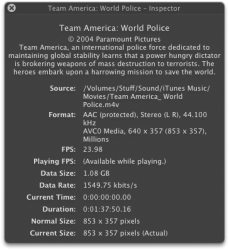Can somebody please explain the difference between "keep aspect ratio" and "Anamorphic (PAR)" in the settings of the AppleTV default?
Why would the anamorphic be checked by default? Does it produce a better picture, or worse because it has to blow it up some?
I just wanted to be clear before I start to encode my DVDs... My ATV is on its way!!
Any other encoding suggestions would be appreciated as well.
Thanks..
Why would the anamorphic be checked by default? Does it produce a better picture, or worse because it has to blow it up some?
I just wanted to be clear before I start to encode my DVDs... My ATV is on its way!!
Any other encoding suggestions would be appreciated as well.
Thanks..


